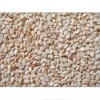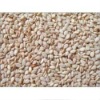- Peanuts[7]
- Oil Seeds[9]
- Single Spices & Herbs[10]
- Granite[1]
- Raw Cotton[4]
- Sea Cucumber[1]
- Decorative Flowers & Wreaths[1]
- Other Gifts & Crafts[1]
- Other Food & Beverage[1]
- Other Food Processing Machinery[1]
- Fresh Garlic[10]
- Dried Vegetables[5]
- Vegetable Seeds[1]
- Broad Beans[10]
- Lentils[1]
- Sauce[10]
- Plant Extract[3]
- Healthcare Supplement[1]
- Frozen Vegetables[1]
- Fresh Potatoes[1]
- Fresh Onions[4]
- Other Fresh Vegetables[1]
- Fresh Carrots[4]
- Fresh Apples[2]
- Fresh Pears[2]
- Fresh Citrus Fruit[7]
- Fresh Ginger[1]
- Fresh Taro[1]
- Iron Ore[1]
- Contact Person : Mr. GAO LIFENG
- Company Name : Qingdao Yafod Import And Export Co., Ltd.
- Tel : 0086-532-66563168
- Fax : 0086-532-85787901
- Address : Shandong,QINGDAO,2-2-1501, No.113,Jiangxi Road, Qingdao, China
- Country/Region : China
- Zip : 266071
natural sesame seeds
Sesame Seeds Indian sesame seeds accounts for one-third of world’s sesame seeds production. India produces a whole range of sesame varieties and grades, each peculiar to the region where they are grown. Hulled Sesame is pearly white. It has a rich, nut-like flavor when roasted. Hulling or Decorticating is the process of removing the outer husk. Production area Sesame grows in tropical and subtropical areas. The sesame seed plant is an annual with a branched stem that grows to a height of 0.6 – 1.2 m (2-4 feet). The small seeds vary in size up to 3.5 mm (1/8 inch). Color may range from yellowish white to red, brown and black. In India Sesame seeds are grown in Gujarat, Rajasthan, Uttar Pradesh, Madhya Pradesh and Maharashtra. Sesame Seeds from Gujarat state is widely preferred due to its uniform colour and bold size. Varieties Natural Sesame Seeds Specifications
| White Seeds | Dark Coloured Seeds | Admixture | Oil Content | FFA | |
| Min | Max | Max | Max | Max | |
| 99/1/1 | 99% | 1% | 1% | 48% | 2% |
| 98/2/2 | 98% | 2% | 2% | 48% | 2% |
| 99/1/1-99.95% | 99% | 1% | 0.05% | 48% | 2% |
| 95/5 Crushing | 95% | 5% | 2% | 48% | 2% |
| Hulled Sesame Seeds Specifications | |||||
| Purity | Admixture | Moisture | |||
| Max | Min | Max | |||
| Sun Dried 99.90% | 99.90% | 0.10% | 5% | ||
| Auto Dried 99.90% | 99.90% | 0.10% | 5% | ||
| Auto Dried 99.95% | 99.95% | 0.05% | 5% | ||
| Auto Dried-Sortex | 99.95% | 0.05% | 5% | ||
Uses The simplest and now commonest use of sesame is as whole seeds sprinkled over cakes and breads, like poppy seeds. In Syria and Lebanon it is mixed with sumac and thyme to make the condiment zatar. Sesame is a key ingredient in halva, the Middle Eastern confection, where the seeds are ground and pressed into blocks with various sweet or nutty ingredients. Sesame in its ground form, tahini, is widely used throughout the Middle East and Mediterranean. It is a flavouring for hummus, a sauce for kebabs and is often mixed with lemon and garlic to make a bread dip — a popular Arab appetizer or mezze. In Mexico, its oil is called ajonjoli which is frequently used for cooking. Black sesame appears frequently in Chinese, Japanese and Korean dishes where meat or fish is rolled in the seeds before cooking for a crunchy coating. Black sesame is an ingredient of gomassio, the Japanese tabletop condiment, and other colourful rice and noodle dishes.
natural sesame seeds









